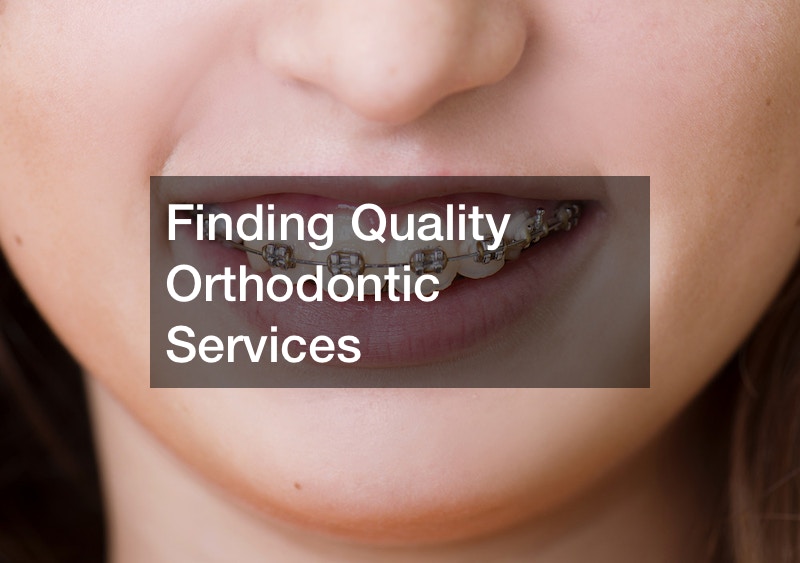Recovering your smile and maintaining lifelong oral health isn’t just about brushing and flossing. By adopting a holistic approach—one that encompasses daily routines, professional care, emergency preparedness, and even home environment upgrades—you can build habits that stand up to time and circumstances. Whether you’re looking to prevent cavities, manage sensitivity, or explore advanced restorative options, a clear roadmap will help you take control of your dental destiny.
In this comprehensive guide, you’ll discover practical strategies for every facet of oral wellness. From optimizing brushing techniques to leveraging cutting-edge water purification systems for rinsing, we cover both foundational practices and innovative solutions. You’ll also learn how to coordinate with healthcare professionals, from local dentists to pediatricians, and find out when instacare services can save the day. Finally, we’ll show you how partnering with the right home remodeling contractor and appliance services can reinforce your commitment to a healthier mouth. Let’s dive in.
Prioritize Regular Dental Checkups
Routine visits to local dentists form the cornerstone of preventive care. During biannual checkups, your dental team examines areas that are easy to miss at home—like the back molars, gum margins, and under the tongue. These professionals can spot early signs of decay, gum disease, and even oral cancers, allowing you to address issues before they become serious.
Maintaining consistency with these appointments also reinforces a professional partnership. When you cultivate trust with your dental provider, you’ll feel more comfortable discussing sensitive topics such as pain management during procedures. Open communication ensures that any discomfort you experience is minimized and that your treatment plan aligns with both your health goals and your tolerance for various interventions.
Optimize Brushing Habits
Brushing twice a day with a fluoride toothpaste is the baseline for healthy teeth, but technique matters just as much as frequency. Hold your brush at a 45-degree angle to your gumline and use gentle, circular motions. This approach dislodges plaque without damaging soft tissues. Don’t forget to swipe the chewing surfaces and the backs of front teeth, where plaque can accumulate unnoticed.
Upgrading your toothbrush can make a surprising difference. Electric models—when properly maintained—often outperform manual brushes at plaque removal. If you invest in a high-quality electric brush, schedule routine tune-ups through reputable appliance services. Keeping brush heads fresh ensures optimal performance and prevents bacterial buildup, which could compromise your efforts.
Perfect Flossing and Interdental Cleaning
Daily flossing remains essential for removing debris between teeth and just below the gumline. Whether you use waxed string, dental tape, or pre-threaded flossers, be sure to curve the floss into a “C” shape around each tooth. Glide it gently up and down, rather than forcing it horizontally, to avoid injuring your gums.
For those with tight contacts or orthodontic appliances, interdental brushes or water-based flossers can fill the gap. When choosing a water flosser, look for systems that integrate well with your home’s plumbing or counter space. Some advanced models connect to your water treatment system, delivering purified water that reduces mineral buildup within the device and guarantees a cleaner, more comfortable rinse.
Utilize Modern Oral Care Appliances
Beyond standard brushes and flossers, there’s a host of appliances designed to elevate your routine. Ultra-sonic toothbrushes, for instance, use high-frequency vibrations to disrupt plaque biofilm. Meanwhile, at-home whitening trays can safely brighten enamel when used under guidance from local family dentists.
Because these devices represent a mechanical investment, it’s wise to enlist professional appliance services for calibration and repairs. A malfunctioning water flosser or electric brush could deliver inconsistent results or even harbor bacteria. By scheduling annual maintenance, you ensure that each tool continues to perform at peak efficiency, supporting rather than hindering your health goals.
Embrace Hydration with Clean Water
Hydration plays a critical role in saliva production, which naturally neutralizes acids and transports minerals to tooth surfaces. However, tap water can carry impurities that affect taste and safety. Installing a dedicated water treatment system in your home addresses these concerns, providing consistently clean water for drinking and oral rinsing.
Beyond basic filtration, advanced water purification systems remove bacteria, heavy metals, and chemical residues. When you rinse or swish with purified water, you’re not introducing potential irritants into your mouth. This extra layer of cleanliness supports overall health and ensures that your saliva maintains its protective functions without interference from unwanted contaminants.
Follow a Nutrient-Rich Diet
What you eat directly influences oral microbiology. Foods high in sugar and simple carbohydrates fuel acid-producing bacteria, which in turn erode enamel and irritate gums. To tip the balance in your favor, emphasize whole fruits, lean proteins, and fibrous vegetables. These choices not only supply essential vitamins and minerals but also stimulate saliva flow to wash away food particles.
Calcium and phosphorus—found in dairy products, nuts, and leafy greens—reinforce tooth structure by remineralizing enamel. Pair these nutrients with vitamin C from citrus fruits as part of your daily menu. Maintaining a varied, nutrient-dense diet gives your teeth and gums the building blocks they need to repair microscopic damage and resist infection.
Address Pain and Discomfort Proactively
Sensitive teeth or tender gums can undermine your commitment to good habits. If brushing triggers discomfort, it’s crucial to seek solutions before falling off your routine. Many dental offices offer targeted pain management protocols, ranging from desensitizing toothpastes to in-office treatments like fluoride varnishes or laser therapy.
When acute pain arises—say, from an infected pulp—don’t hesitate to contact your dentist or explore instacare services that specialize in urgent dental care. Prompt intervention prevents a minor sensitivity issue from escalating into a root canal or extraction. Keep an emergency kit stocked with over-the-counter gels and nonsteroidal anti-inflammatories as temporary relief until professional treatment is available.
Focus on Family and Pediatric Oral Health
Oral habits often begin in childhood, making early guidance crucial. Pediatricians regularly screen infants for teething patterns and advise on healthy bottle use to prevent early decay. As children grow, transitioning to a dedicated pediatric oral care routine—with kid-friendly brushes and supervised flossing—lays the groundwork for lifelong habits.
Beyond children, consider coordinated family appointments with local family dentists. These providers tailor their environments to comfort both parents and kids, offering education that resonates with each age group. By aligning everyone’s care under one roof, you reduce scheduling friction and reinforce the importance of oral health as a shared family value.
Prepare for Dental Emergencies
Even with preventive measures, emergencies can occur: a knocked-out tooth, a cracked crown, or sudden swelling. Knowing where to turn saves critical minutes. Start by contacting local dentists who offer emergency slots, then identify nearby instacare services equipped for dental trauma, especially during off-hours or weekends.
As part of your readiness plan, keep a small case with sterile gauze, a container for transporting a dislodged tooth, and your dentist’s contact information. If a child experiences an accident, pediatricians can provide immediate assessment before dental care. Having these connections and supplies on hand transforms panic into purposeful action, preserving both health and peace of mind.
Consider Advanced Restorative Options
When decay or injury requires more than a filling, restorative procedures can restore both function and aesthetics. Crowns and bridges are time-tested, but modern dental implant solutions offer durability and natural appearance unmatched by other treatments. By anchoring directly into jawbone, implants prevent bone loss and maintain facial structure over time.
Before proceeding, discuss options with a qualified dentist, reviewing factors like bone density, healing time, and cost. Many practices now bundle implant placement with sedation protocols, incorporating comprehensive pain management from consultation through recovery. Understanding each step helps you weigh benefits and responsibilities before committing to a long-term restorative plan.
Enhance Your Home Environment for Oral Care
Your bathroom setup can support or sabotage your best intentions. If countertops are cluttered or lighting is inadequate, you’re less likely to follow through on nightly routines. Consulting a skilled home remodeling contractor allows you to design a space optimized for oral hygiene. Thoughtful layout choices—like under-cabinet lighting and dedicated appliance outlets—make brushing, flossing, and rinsing effortless.
Incorporating specialized cabinetry with built-in charging stations for electric brushes and flossers further streamlines your regimen. Partnering with appliance services ensures that any integrated devices—such as a countertop water flosser or UV sanitizer—are correctly installed and maintained. A well-organized, technologically equipped bathroom acts as an ever-present reminder to prioritize your oral health.
Leverage Professional Partnerships
Sustaining improved habits often relies on teamwork. Establish relationships not only with dental professionals but also with allied services. Regular check-ins with your dentist and pediatricians reinforce accountability, while scheduled maintenance by appliance services and inspections of your water treatment system confirm that your tools remain reliable.
If you’re renovating key spaces, involve your home remodeling contractor early in the planning process. They can collaborate with your dentist’s recommendations—such as installing a small sink for quick rinsing or choosing water-resistant materials that tolerate frequent use. These coordinated efforts magnify the impact of your daily practices, creating an ecosystem that nurtures oral health at every turn.
Transforming your oral health habits demands more than isolated efforts—it requires an integrated approach encompassing daily routines, professional care, emergency planning, and supportive home design. By partnering with local dentists and pediatricians, you tap into expert guidance at every life stage. Leveraging water purification systems and a robust water treatment system ensures that your rinses are free of contaminants, while modern appliances, maintained by specialized services, optimize cleaning efficacy.
When discomfort strikes, effective pain management and access to instacare services prevent minor issues from escalating. Planning for emergencies—complete with contacts for local family dentists—secures your readiness when accidents occur. Advanced solutions such as dental implant placement restore function and confidence, and thoughtful home upgrades by a home remodeling contractor reinforce your commitment. Together, these comprehensive strategies create a sustainable framework for oral wellness, empowering you to smile brighter and live healthier every day.




